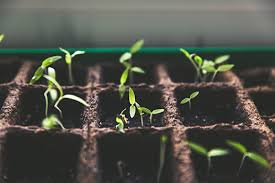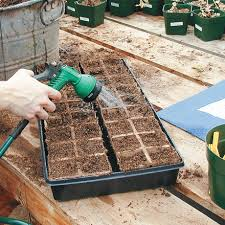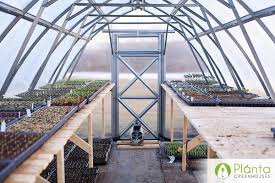A greenhouse is an invaluable tool for gardeners, offering the perfect environment for starting seeds. Not only does it extend the growing season, but it also provides increased warmth, humidity, and light—ideal for seed propagation.
When to Start Seeds in a Greenhouse
You can technically start seeds in a greenhouse at any time, assuming your region is warm enough or you use supplemental heating. However, timing is crucial to prevent seedlings from outgrowing their pots before it’s time to transplant them outdoors.
To avoid this, check the recommended start times on your seed packets. For instance, hot peppers should be started about two months before being planted outside. If you plan to keep your plants in the greenhouse for the entire season, you can start seeds whenever conditions inside are favorable.

Choosing Containers and Soil
For successful seed starting, opt for a soilless potting mix. These blends balance air, water retention, and drainage, providing ideal conditions for seeds. They are also sterile, reducing the risk of pathogens harming your seedlings.
For containers, choose sturdy seed trays if you’re starting many seeds. Biodegradable pots, like those made from cow manure, are a great choice for reducing root disturbance during transplanting. CowPots are environmentally friendly and work well for plants like carrots and spinach, which have delicate roots.
If you need individual pots for larger plants like peppers or tomatoes, choose 4-inch pots. Biodegradable options allow you to transplant with minimal disruption.

Preparing to Sow
Before sowing, some seeds need special preparation, like soaking or stratification. Certain species, such as lettuce and pansies, are prone to damping off, a fungal disease, and should be soaked in a fungicide like Mycostop to reduce risk.
Also, check the viability of your seeds. You can test them by placing them in water—seeds that float are generally no longer viable.
Sowing Seeds
Fill containers with your chosen potting mix, making sure to pre-moisten the soil. Avoid packing the mix too tightly, as this can hinder root development. For larger seeds, make holes in the soil, while smaller seeds can simply be sprinkled on the surface.
Water the seeds gently and, if necessary, mist them to keep them hydrated. Be mindful of the position of your seeds: sow in the center of the pot to prevent drying out at the edges.

Seed and Seedling Care
Depending on the time of year, supplemental lighting may be necessary to ensure healthy growth. Inadequate light can cause seedlings to become leggy and weak. Heating mats can also help maintain consistent warmth, promoting better germination, especially for warmth-loving plants like tomatoes and peppers.
Consistent moisture is essential. Drip irrigation or soaker hoses can simplify watering, ensuring your seedlings don’t dry out.
Fertilizing should wait until the first set of true leaves appears. When you do feed, use a mild, balanced fertilizer like Dr. Earth’s Root Zone Starter Fertilizer, which is gentle on young plants.
Maintain proper humidity in the greenhouse—too much moisture can encourage fungal diseases. Opening doors or using fans can help control moisture levels.
Transplanting
Before moving your seedlings outside, they must be “hardened off” to adjust to outdoor conditions. Start by taking them outside for 30 minutes to an hour, gradually increasing the exposure over one to two weeks. This process helps prevent transplant shock and strengthens the seedlings.
Conclusion
A greenhouse is an excellent investment for gardeners who want to get a head start on the growing season. It offers the perfect conditions for seed starting, from the right temperature and light to humidity control. With the right containers, soil, and care, your seedlings will thrive and be ready for transplanting when the time comes. Happy planting!
Let us know which seeds you’re starting in your greenhouse this year in the comments below!
